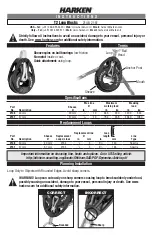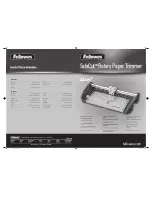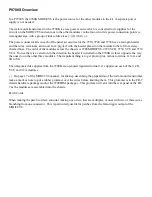
1
TriPlus RSH Site Preparation
Environment Requirements
Thermo Scientific
TriPlus RSH Preinstallation Requirements Guide
11
2. Ensure that the relative humidity in your laboratory is between 40 and 75%, with no
condensation. A temperature and humidity monitor in your laboratory helps ensure that
the climate is within these specifications.
3. Ensure that the air in your site is free of excess
particulate matter
.
For reference, the air should contain fewer than 100,000 particles (larger than 5 ?m) per
cubic meter. If the concentration is larger than this amount, dust can accumulate on
electronic components. This accumulation reduces their ability to cool off properly and
could cause them to overheat. If your environment is particularly dusty, we recommend
that you purchase the optional dust filter for your system.
4. Ensure that your site is free of electrostatic discharge (ESD), which might damage the
electronic components of your system. Ensure your static has been discharged before
touching internal components of the instrument. ESD can damage sensitive components,
resulting in premature failures.
Take the following precaution to prevent electrostatic discharge:
• Use a static-dissipating floor covering (such as tile or conductive linoleum) in the
room housing your instrument.
• Use laboratory chairs covered with natural fibers or other static-dissipating material.
CAUTION
Do not directly expose the GC system to any cooling duct outlets.
CAUTION
Table 8.
Maximum Heat Generated by Each Instrument
Equipment
Heat Output (BTU per Hr.)
Heat Output (in W)
TriPlus RSH
683** or 1366***
200** or 400***
TRACE GC Ultra
6550
1920
FOCUS GC
5460
1600
TSQ 8000 MS, including foreline
pump
3685
1080
ISQ MS, including foreline pump
4095
1200
DSQ II MS
2390
700
ITQ MS
2390
700
TSQ-Quantum XLS MS
7851
2301
Computer *
1365
400
Monitor *
85
25
* Power requirements vary by manufacturer. ** Single power module *** Two power modules




































